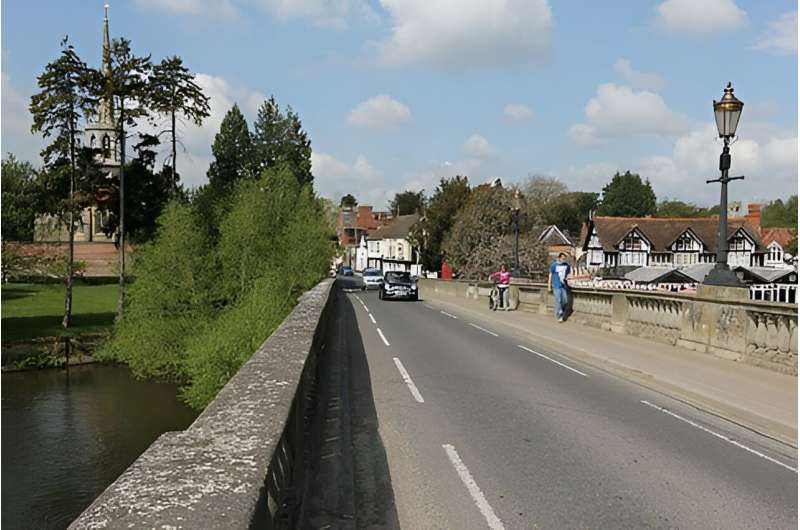This article has been reviewed according to Science X's editorial process and policies. Editors have highlighted the following attributes while ensuring the content's credibility:
fact-checked
trusted source
proofread
New method measures levels of toxic tire particles in rivers

Scientists at the UK Centre for Ecology & Hydrology (UKCEH) have developed a robust method for detecting whether a toxic chemical used in car tires is present in rivers, streams, and lakes and measuring its concentrations.
Tire wear is one of the largest sources of microplastics in rivers, potentially posing a significant risk to wildlife that ingest the particles. Toxic chemicals present in these microplastics have already been linked to the deaths of salmon in the United States and trout in Canada.
The UKCEH project team chose 6PPD, a commonly used additive in the manufacture of car tires to prevent the degradation of rubber, as the focus of their research. It was carried out on behalf of Defra as part of a wider project to develop a way of detecting and quantifying microplastics in river water and sediment.
UKCEH pollution scientist Dr. Richard Cross explains, "From a scientific perspective, car tires are a challenging material to investigate. Every tire manufacturer uses a different formulation, and it can be quite a closely guarded secret."
"However, a handful of additives are used in the production of almost all vehicle tires. These have relatively consistent concentrations and aren't really used in anything except tires. One of those is 6PPD, and that's why we decided to use it as the 'red flag' that told us tire rubber was in our sample."
As the additive degrades in the environment by reacting with ozone, it transforms into a toxic compound called 6PPD-quinone, which can become dangerous to wildlife when it runs off into a water course during rainfall and storms. It has been implicated in Urban Runoff Mortality Syndrome, where stormwater discharges coincide with salmon returning to the streams where they were born, causing mass deaths of adult fish before they can reach these spawning grounds.
Since 2022, scientists from UKCEH have taken samples from sediment in the River Thames in Wallingford, Oxfordshire, next to a busy road bridge, and on the River Irk in Manchester. Sediment was chosen for monitoring because the particles from tires and road wear are dense and can be relatively large and will quickly form part of the river sediment.
Sediments are very diverse and can undergo rapid changes, particularly during heavy rainfall. Any method to quantify toxic chemicals in sediments accurately must take into account how variable concentrations are where you are sampling. Through repeat sampling, the project team was able to detect differences between the more contaminated site on the River Irk and the less contaminated sediments in the Thames at Wallingford.
Using gas chromatography mass-spectrometry techniques, they analyzed each sediment sample to detect the presence of 6PPD. By looking in detail at how variable each location could be, the team proposed a way their sampling method could be rolled out in the future to robustly detect, measure, and quantify the presence of 6PPD and measure its quantity in water courses.
In addition to this work, UKCEH was able to use the same sampling design to quantify other microplastic fragments in both waters and sediments, an essential step towards understanding the extent of tire wear particle pollution compared to other sources of microplastic pollution in these rivers.
The chemical 6PPD has been identified as a priority substance for monitoring by the Environment Agency's Prioritization and Early Warning system, and so the method developed at UKCEH provides an essential tool to understand more about this compound and the wider risks that microplastics and tire wear pose to freshwaters in the UK. It is aimed at governments and regulators, as well as tire and additive manufacturers that are interested in product risk assessment.
More information: Project page and report: randd.defra.gov.uk/ProjectDetails?ProjectId=20540
Provided by UK Centre for Ecology & Hydrology




















